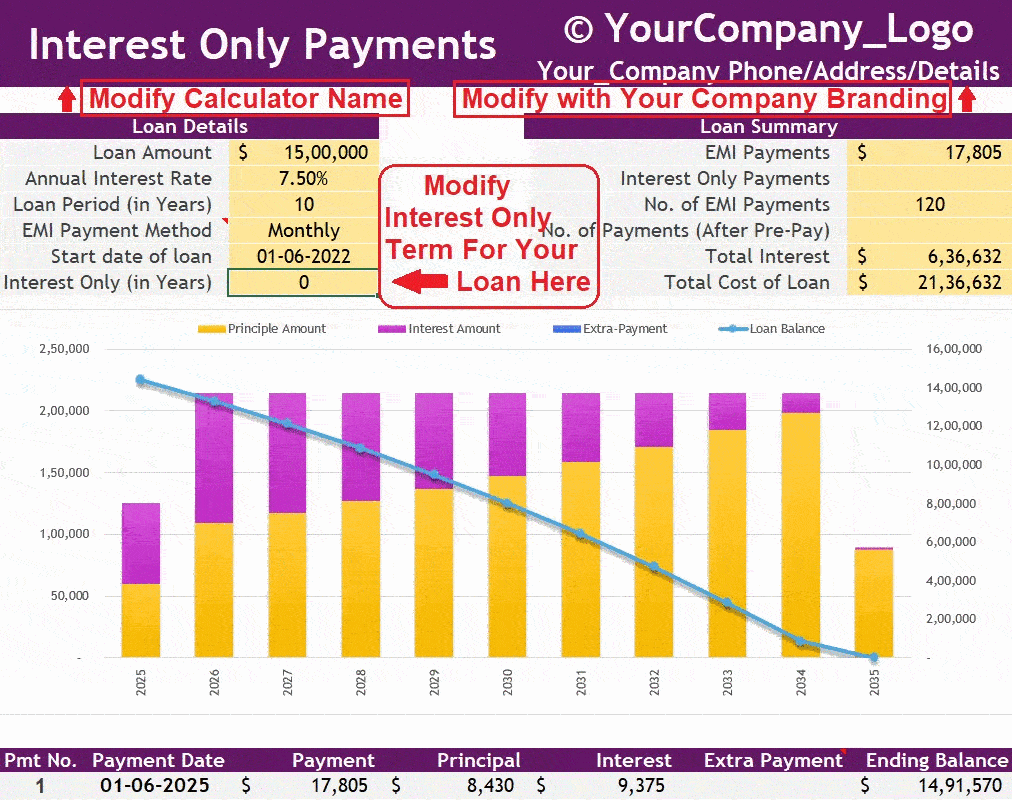
There are several things to take into consideration when comparing a conventional loan with a VA loan. These factors include down payment requirements and mortgage insurance. These loans can be used by veterans to reduce your housing costs and eliminate the need for PMI. These loans do not require any down payments. This can help reduce your total housing cost.
Convenient Loan vs. VA Loan
The down payment is the main difference between a VA loan and a conventional mortgage. Conventional mortgages require the borrower to pay at least 3 percent of purchase price. By contrast, a VA loan requires no down payment. This is great for people who do not want to have to pay a lot of money down. Bankrate data shows that 36 percent of Americans do not own their homes and the primary reason is the lack of funds for a down payment.
The funding fee is another major difference between a VA loan or a conventional loan. A VA loan doesn't require private mortgage insurance. This covers the lender in the case of default. In addition, a VA loan allows borrowers to have flexible payback terms, including a graduated payment structure.

Requirements to make a down payment
The down payment requirement is the main difference between VA and conventional loans. Conventional loans require a 20% downpayment and are best for purchasing investment property and vacation homes. VA loans, on the other hand are not approved for primary residences. Conventional loans can also be used to purchase a second house or an investment property.
VA loans may require as little as 3% down payment. Many military personnel choose to contribute a portion of the down payments, particularly if they are able to afford it. The down payment will lower the loan's funding fee and eliminate PMI.
Mortgage insurance
You will need to have mortgage insurance if your goal is to buy a house. Private mortgage insurance, also known as PMI, is required for most conventional loans. This insurance is a cost you have to pay to the lender if you default on your loan. The insurance policy can be as high as 2% of your loan amount each year. VA loans, on the other hand, do not require mortgage insurance. VA loans are guaranteed by a government trust and therefore do not require any mortgage insurance.
VA mortgage loans are a great option. These loans are often low-interest and do not require any down payments. VA mortgage loans also allow you to use non-traditional trade lines such as utility bills, rent history or other accounts. A credit score of at least 620 may be enough to get you approved.

Fonds fees
There are many variations in funding fees for VA and conventional loans. Conventional loans usually require private mortgage insurance (PMI), while VA loans do not. Both types of loans have a funding fee, though. This fee costs between 0.5% - 3.6% of loan amount. It can be paid at closing and rolled into loan.
Federal law makes funding fees mandatory for VA loans. These fees help protect the VA home loan program in the event that a borrower defaults on the mortgage. The amount of the fee varies based on the type of loan and the veteran's status. This fee is exempt for certain veterans. However, funding fees for conventional loans are not required by law. Conventional homebuyers also have to pay private mortgage insurance and other fees.
FAQ
What are the most important aspects of buying a house?
When buying any type or home, the three most important factors are price, location, and size. It refers specifically to where you wish to live. Price is the price you're willing pay for the property. Size refers how much space you require.
What are the advantages of a fixed rate mortgage?
Fixed-rate mortgages lock you in to the same interest rate for the entire term of your loan. This ensures that you don't have to worry if interest rates rise. Fixed-rate loans come with lower payments as they are locked in for a specified term.
What is a reverse loan?
Reverse mortgages allow you to borrow money without having to place any equity in your property. This reverse mortgage allows you to take out funds from your home's equity and still live there. There are two types available: FHA (government-insured) and conventional. Conventional reverse mortgages require you to repay the loan amount plus an origination charge. FHA insurance covers repayments.
Do I require flood insurance?
Flood Insurance protects from flood-related damage. Flood insurance helps protect your belongings and your mortgage payments. Learn more information about flood insurance.
Can I get another mortgage?
Yes. But it's wise to talk to a professional before making a decision about whether or not you want one. A second mortgage is often used to consolidate existing loans or to finance home improvement projects.
What are the drawbacks of a fixed rate mortgage?
Fixed-rate loans are more expensive than adjustable-rate mortgages because they have higher initial costs. If you decide to sell your house before the term ends, the difference between the sale price of your home and the outstanding balance could result in a significant loss.
How many times do I have to refinance my loan?
It depends on whether you're refinancing with another lender, or using a broker to help you find a mortgage. Refinances are usually allowed once every five years in both cases.
Statistics
- This seems to be a more popular trend as the U.S. Census Bureau reports the homeownership rate was around 65% last year. (fortunebuilders.com)
- This means that all of your housing-related expenses each month do not exceed 43% of your monthly income. (fortunebuilders.com)
- Private mortgage insurance may be required for conventional loans when the borrower puts less than 20% down.4 FHA loans are mortgage loans issued by private lenders and backed by the federal government. (investopedia.com)
- When it came to buying a home in 2015, experts predicted that mortgage rates would surpass five percent, yet interest rates remained below four percent. (fortunebuilders.com)
- Over the past year, mortgage rates have hovered between 3.9 and 4.5 percent—a less significant increase. (fortunebuilders.com)
External Links
How To
How to find an apartment?
When moving to a new area, the first step is finding an apartment. This takes planning and research. This involves researching and planning for the best neighborhood. There are many ways to do this, but some are easier than others. Before you rent an apartment, consider these steps.
-
Researching neighborhoods involves gathering data online and offline. Online resources include Yelp. Zillow. Trulia. Realtor.com. Local newspapers, landlords or friends of neighbors are some other offline sources.
-
Review the area where you would like to live. Yelp. TripAdvisor. Amazon.com all have detailed reviews on houses and apartments. Local newspaper articles can be found in the library.
-
For more information, make phone calls and speak with people who have lived in the area. Ask them what they liked and didn't like about the place. Ask if they have any suggestions for great places to live.
-
You should consider the rent costs in the area you are interested. Renting somewhere less expensive is a good option if you expect to spend most of your money eating out. On the other hand, if you plan on spending a lot of money on entertainment, consider living in a more expensive location.
-
Find out all you need to know about the apartment complex where you want to live. What size is it? What price is it? Is it pet friendly? What amenities does it offer? Is it possible to park close by? Are there any special rules that apply to tenants?